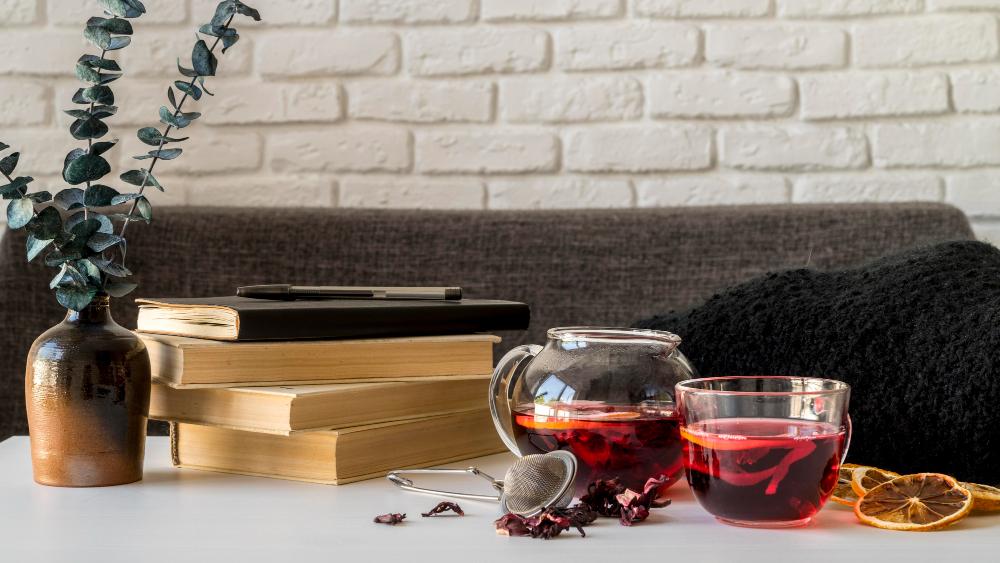From steaming clay cups in ancient apothecaries to sleek glass mugs in modern kitchens, tea has journeyed through the ages as more than just a beverage, it's a tradition, a ritual, and in many cultures, a form of medicine. The wisdom of ancient remedies continues to shape how we brew, sip, and share tea today. Whether you're steeping chamomile to wind down or mixing turmeric and ginger for immunity, every cup tells a story rooted in centuries of healing practices.
Modern tea rituals often draw from these ancestral traditions, blending holistic wellness with the everyday act of taking tea. As the popularity of herbal infusions grows, there's a renewed interest in understanding the natural ingredients once used by healers, shamans, and herbalists across the globe. Brands like goddess tea have tapped into this resurgence by offering blends that pay homage to these traditions while catering to contemporary wellness seekers.
In this article, we explore the powerful intersection of ancient remedies and modern tea culture. We’ll look at the origins of herbal medicine, the cultural significance of tea ceremonies, and how these ancient insights inform the way we drink tea today, from ingredient selection to mindfulness practices.
Key Points
-
Tea has deep roots in traditional medicine practices across diverse cultures.
-
Modern wellness tea blends often incorporate herbs and spices used in ancient remedies.
-
Tea rituals can be tools for mindfulness, balance, and holistic health.
-
Traditional knowledge influences how we prepare, consume, and appreciate tea today.
Ancient Remedies: A Foundation of Herbal Wisdom
Long before pharmaceuticals, humans turned to nature for healing. Ancient systems like Traditional Chinese Medicine (TCM), Ayurveda from India, and Indigenous healing practices from Africa and the Americas all relied heavily on plant-based remedies. Tea, often in the form of decoctions or infusions, was a primary delivery method for these remedies.
Traditional Chinese Medicine (TCM)
In TCM, tea was never just a drink—it was a tool for balancing the body's qi (life energy). Herbs like chrysanthemum, pu-erh, and ginseng were steeped to address specific imbalances. Chrysanthemum, for instance, was used to cool internal heat and support vision, while ginseng was revered for its adaptogenic properties.
Ayurveda: Tea as a Dosha Balancer
Ayurveda, the ancient Indian system of medicine, categorizes individuals based on doshas: Vata, Pitta, and Kapha. Herbal teas are crafted to balance these energies. For example, ginger tea stimulates digestion and balances Kapha, while mint tea cools fiery Pitta types.
Indigenous Herbal Knowledge
Native American, African, and South American tribes used tea for ceremonial and medicinal purposes. Yaupon holly, the only naturally caffeinated plant native to North America, was brewed into a stimulating tea. Rooibos in South Africa and guayusa in the Amazon served similar purposes supporting endurance, alertness, or calming the spirit.
From Medicinal Brews to Modern Teacups
As tea became globalized, its purpose expanded beyond medicine. While loose leaf green or black teas became daily staples, herbal infusions continued to be associated with health. Today’s wellness tea market reflects a blend of these traditions with modern science and lifestyle needs.
Functional Blends for Today’s Needs
Many contemporary tea blends are designed with health outcomes in mind—stress relief, detoxification, digestion, and immune support. These blends often mirror ancient recipes. A turmeric-ginger blend, for instance, may be inspired by Ayurvedic practices, while chamomile-lavender combinations reflect European folk traditions.
Adaptogens and the Rise of Herbal Performance Teas
Ancient remedies introduced the world to adaptogens—plants that help the body resist stressors. Today, ingredients like ashwagandha, holy basil (tulsi), and rhodiola are increasingly found in tea, offering natural support for mental clarity and energy.
Clean Label and Ethical Sourcing
Just as ancient healers respected the earth, modern tea brands often emphasize sustainability and ethical sourcing. Herbs are cultivated organically and harvested responsibly, aligning with traditional values of harmony between humans and nature.
The Revival of Tea Rituals
Beyond ingredients, the act of making and drinking tea itself has become a ritual—an intentional pause in our often chaotic lives. This return to ritual reflects ancient practices where tea was more than nourishment; it was spiritual, ceremonial, and communal.
Mindfulness in a Mug
Ancient tea ceremonies in Japan and China emphasized presence and grace in every movement. Today, mindfulness practices often incorporate tea as a grounding exercise—breathing with each sip, appreciating the aroma, and focusing on the sensations can replicate the meditative aspects of historic rituals.
Tea as Self-Care
Preparing a cup of herbal tea can become a moment of self-nurture. Whether it's selecting herbs to match your mood or setting aside phone-free time to enjoy it, tea becomes a practice in tuning into your body and emotions—a concept deeply tied to ancient wellness philosophies.
Popular Ancient Ingredients Still Steeped Today
Let’s explore some of the most enduring herbs and botanicals used both historically and in modern tea blends:
-
Ginger: A digestive aid and anti-inflammatory used in Ayurveda and TCM.
-
Turmeric: Known for its anti-inflammatory and antioxidant properties.
-
Licorice Root: Balances adrenal function and soothes the respiratory system.
-
Peppermint: Used in Greek and Roman traditions for digestion and mood.
-
Chamomile: A European folk remedy for relaxation and sleep.
-
Hibiscus: Traditionally used in Africa and the Caribbean for cardiovascular support.
DIY Ancient-Inspired Tea Recipes
Creating your own blends can connect you directly to ancient remedies. Here are three simple recipes inspired by historical traditions:
1. Ayurvedic Digestive Tea
Ingredients:
-
1 tsp fennel seeds
-
1 tsp coriander seeds
-
1 tsp cumin seeds
Simmer in two cups of water for 10 minutes. Strain and enjoy after meals.
2. Immune-Boosting TCM Blend
Ingredients:
-
3 slices fresh ginger
-
1 stick cinnamon
-
1 tbsp goji berries
Steep in hot water for 8–10 minutes. Drink warm.
3. Calming European Herbal Infusion
Ingredients:
-
2 tsp dried chamomile
-
1 tsp lavender flowers
-
1 tsp lemon balm
Steep in freshly boiled water for 5 minutes. Sweeten with honey if desired.
Embracing the Wisdom in Every Sip
The beauty of modern tea culture lies in its ability to honor the past while addressing the present. By revisiting ancient remedies and weaving them into contemporary practices, we create rituals that nourish both body and soul. Tea becomes not just a beverage, but a bridge—connecting us to generations before us and grounding us in the now.
As we choose our teas—whether from brands like goddess tea or our own kitchens—we're participating in a lineage of wellness that spans continents and centuries. The cup in your hand may be modern, but the healing it offers is timeless.
FAQ
What are some examples of ancient teas still consumed today?
Many teas used in ancient systems are still popular, including ginger tea, chamomile, turmeric tea, and green tea. These have maintained their reputations for health benefits and are commonly included in wellness blends.
How do modern tea blends incorporate ancient remedies?
Modern blends often use herbs historically known for their healing properties. For example, adaptogenic teas use traditional ingredients like ashwagandha and holy basil to help manage stress and improve energy levels.
Are there any risks in using traditional herbs today?
While many herbs are generally safe, it's essential to consult with a healthcare provider—especially if you're pregnant, nursing, or taking medications. Some herbs can interact with prescriptions or cause allergic reactions.
What is the difference between a tea and an infusion?
Technically, ""tea"" refers to beverages made from the Camellia sinensis plant (like green or black tea). An ""infusion"" is a broader term that includes any plant steeped in hot water—such as chamomile, peppermint, or hibiscus.
Can tea rituals improve mental health?
Yes. Incorporating tea into mindfulness or self-care routines can reduce stress, improve focus, and create moments of peace during a hectic day. The mindful preparation and consumption of tea can be a powerful grounding practice.

